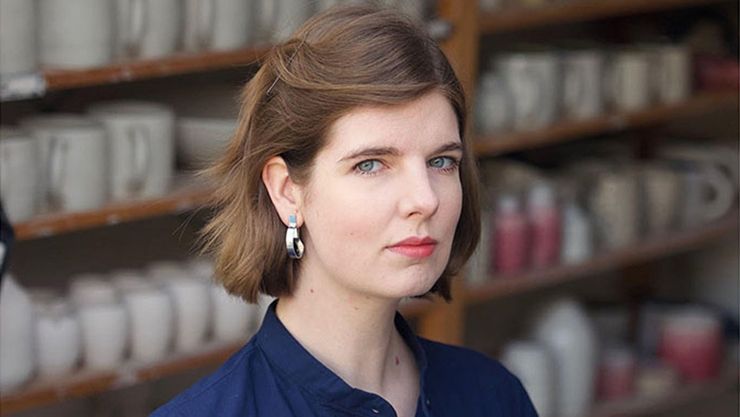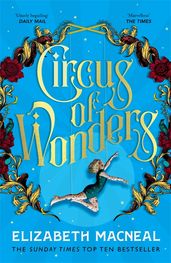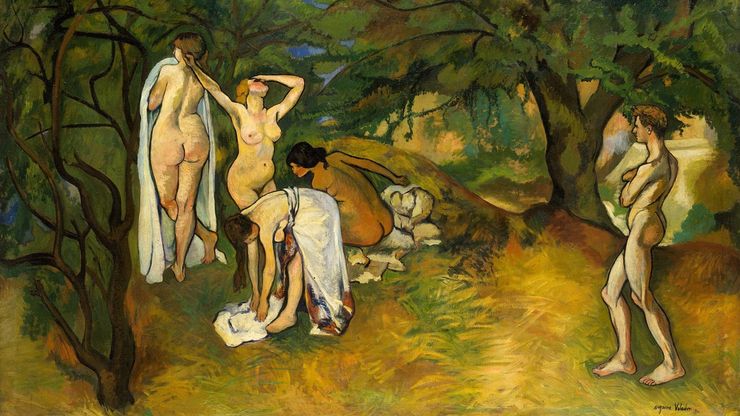The real people behind Elizabeth Macneal’s Circus of Wonders
Elizabeth Macneal made the decision to create an entirely fictional character when writing Circus of Wonders. But there was a rich and troubling cast of real life circus performers to draw on. Here she introduces us to some of them.

Victorian human circuses, which were cruelly dubbed 'freak shows,' offer a window on the recent past and attitudes to otherness. Here writer Elizabeth Macneal describes the triumphs and torments of some of the stars of these circuses – both willing and unwilling – and the showmen who capitalized on physical differences and turned them into lucrative entertainment.
When I began researching Circus of Wonders, a novel about Victorian spectacle, the circus and the so-called ‘freak industry,’ I thought of fictionalizing real historical figures. As I pored over my research books, there were so many celebrated people whose lives were both tragic and triumphant, whose stratospheric 19th-century fame has been eroded by time. Charles Stratton, Daniel Lambert, Millie and Christine McKoy, Julia Pastrana. But whenever I sat down to write, it felt like I was invading their privacy – these were real people about whom so many stories had already been spun by media and showmen, their voices silenced and their histories overwritten by those who profited from their lives.
Instead, I decided to fictionalize my characters entirely. I wrote about Nell, a girl who works in a flower farm in southern England, who finds herself sold to Jasper Jupiter, and from there her fame spreads like wildfire. The novel became about Nell’s quest to tell her own story, unshaped by the showman who bought her, and unshaped by the showman’s patter which trades on misrepresentation. As Nell puts it towards the end of the book, ‘every writer is a thief and a liar.’
However, I felt it was important to acknowledge the wider context of real people and performers too. And so I filled Circus of Wonders with historically accurate references to the lives of many of these individuals, all of whom sit behind Nell and her very own story. Here are just a few of them.
Unidentified Bearded Lady, age 23
I have always been interested in forgotten pieces of history, particularly where lives have been barely recorded, distorted by mis-telling, or eroded over time. It is the fragment that inspires me – that scrap of information where my imagination begins to fill in the rest. When I was flicking through a book of Victorian photography, I came across a reproduction of a carte-de-visite. It was captioned ‘Unidentified Bearded Lady, Age 23.’ She was dressed smartly in a veil and corseted gown, holding a book. Her name, written in looping font, had been smudged and lost. Nothing more was said about her – I couldn’t uncover any traces of her in other books, in footnotes or indexes. But I found I couldn’t forget her; this powerful image lingered in my mind.
Charles Stratton, known as ‘Tom Thumb'
There is much more information about some real life characters – for example Charles Stratton, a little person ‘hired’ by P. T. Barnum at the age of four, and dubbed ‘Tom Thumb.’ He was a real celebrity, his name known across the world. Newspapers sang his praises, a Parisian restaurant changed its name to Le Tom Pouce, actors begged to be associated with him, and his marriage to Lavinia Warren was a lavish affair, witnessed by 10,000 people and reported in newspapers from the New York Times to Harper’s Weekly. Together they earned vast sums of money, owned several houses, a steam yacht and a stable of pedigree horses. However, one line spoken by Lavinia Warren really stuck with me: ‘I belong to the public.’ It is a statement that I found heartbreaking, saying so much about commercial value, about the public attitude to celebrity, about her own sense of her place in the world.
Charles Stratton and Lavinia Warren
P. T. Barnum
Despite his global fame, I could find next to nothing about Charles Stratton written in his own voice. His showman though, P. T. Barnum, wrote numerous books about his own commercial success and his role in securing Stratton’s renown. How did we know so much about Barnum and so little about those who worked for him? The comparative silence speaks volumes about the power imbalance.
P. T. Barnum, made newly famous by the blockbuster hit The Greatest Showman, was an American showman who ran many money-spinning ventures including ‘Barnum’s American Museum.’ Known as the forefather of the PR stunt (for example, he used elephants to plough his fields when promoting his show, which newspapers eagerly featured), his motto was mundus vult decipi: the world chooses to be fooled. While the musical depicts him as a caring ‘rescuer’ of those with physical differences, the reality made for disturbing research and reading. There are numerous examples of his exploitation and unconscionable degradation of those who participated in his show, for example Joice Heth who I feature below.
There are elements of him in my showman Jasper – his cruelty, his greed and desire for power, his exploitation of those who formed part of his show, as well as his focus on hoaxes and deceit trumping reality and truth. I was determined not to glamorise my showman, Jasper, and not to excuse or gloss over his manipulation of others.
P. T. Barnum with Charles Stratton as a child
Joice Heth
P. T. Barnum’s first act involved the purchase of Joice Heth, an African-American slave in 1835. Slavery was illegal in the north of America at this time, so Barnum negotiated to ‘lease’ her. Blind and almost entirely paralysed, Barnum had her remaining teeth extracted to make her look older. He marketed her as ‘The Greatest Natural and National Curiosity in the World,’ alleging that she was 161 years old. On her death, Barnum sold tickets to her autopsy, attended by 1500 members of the public. When it was proved that Joice Heth was not as old as Barnum had claimed, he spun many different tales, including one suggesting that Heth had escaped, and that they’d performed the autopsy on the wrong person. Alive or dead, it seems Barnum did not care as long as he made a profit. It was on this ‘success’ that P. T. Barnum launched his career.
There are countless more people who performed or participated in this booming industry, a place which could both offer freedom and take it away with devastating effect. In writing about Nell, Stella, Brunette and Peggy, I wanted to demonstrate how varied and nuanced their response to performing might be. Brunette might want to escape it, Stella might want to embrace it, Nell might enjoy it but resent the structure which brought her there. However, there are no simple answers, no easy ways of reading a deeply complex and problematic piece of history.
Poster for Joyce Heth
Header image credit: Jonathan Mcquitty
Circus of Wonders
by Elizabeth Macneal
Circus of Wonders is the eagerly-awaited second novel from Elizabeth Macneal, author of the Sunday Times bestselling debut The Doll Factory. In 1866, in a coastal village in southern England, Nell lives outside of her community, marked as different for the birthmarks that speckle her skin. But her life is turned upside down when her father decides to sell her to Jasper Jupiter's travelling Circus of Wonders. Yet, the greatest betrayal of Nell's life may soon become the best thing that has ever happened to her as she finds friendship and belonging with the other performers. But as Nell's fame grows, will she be able to keep control of her own story?



